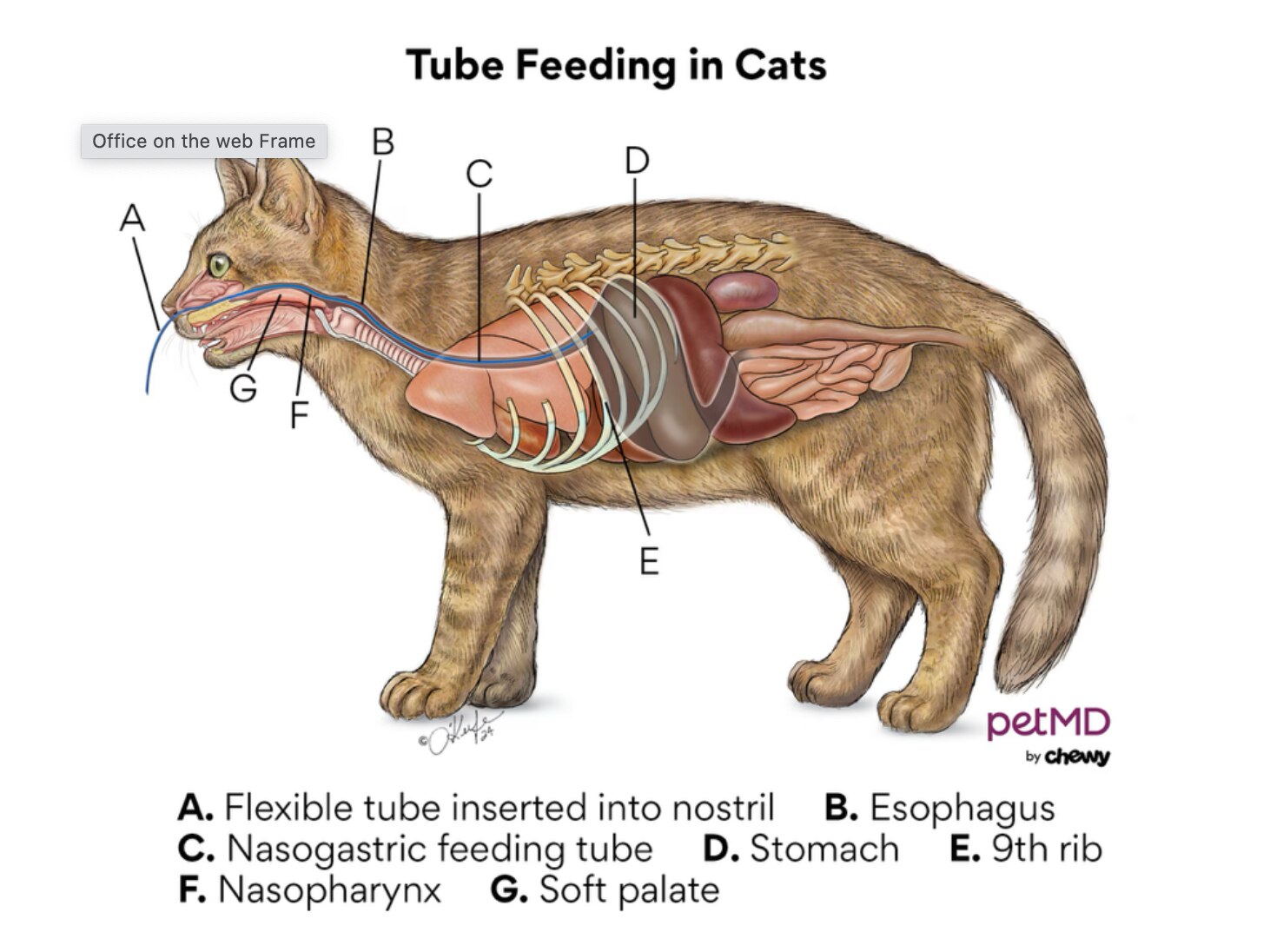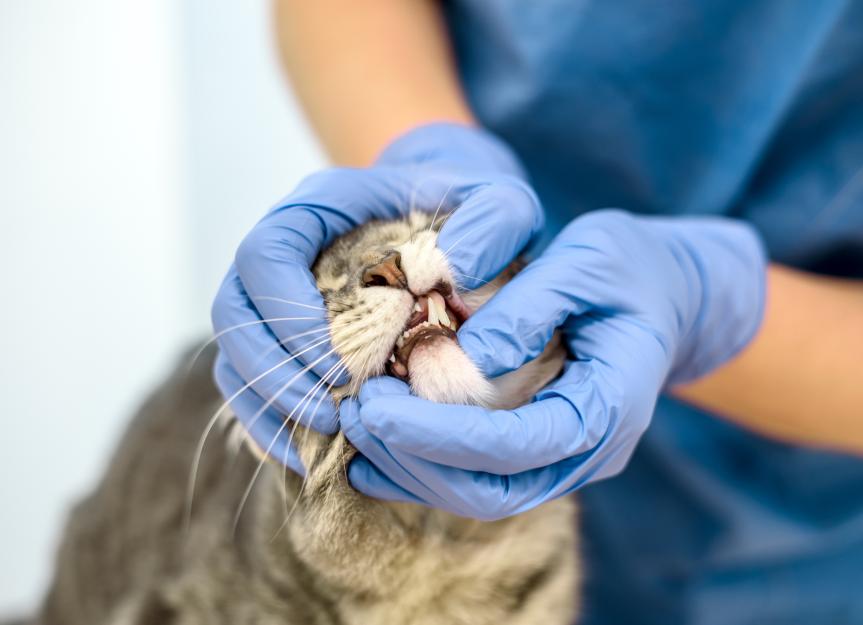Pale gums in cats can be a serious sign of illness, including anemia or poor circulation, and cats with pale gums may require emergency treatment.
Find out what causes pale gums or anemia, what you should do if you notice pale gums in your cat, and how your veterinarian may manage this clinical sign, including treatment for anemia in cats.
Key Takeaways
- Pale gums in cats often indicate anemia, poor circulation, or low oxygen levels and may signal a medical emergency requiring immediate veterinary care.
- Common causes of pale gums include blood loss, chronic kidney disease, heart disease, dehydration, shock, hypothermia, and severe parasitic infections.
- Diagnosis involves a physical exam, bloodwork, urinalysis, imaging, and potentially advanced testing to determine the underlying cause.
- Treatment depends on the cause and may include oxygen therapy, fluids, blood transfusions, medications, and supportive care—with prognoses varying based on the condition.
Why Are My Cat’s Gums Pale?
Healthy cat gums are usually light pink and moist to the touch.
When your cat’s gums are pale or white, it can indicate that there is not enough oxygen in their blood, their circulation is poor, or they have anemia, a reduced number of red blood cells.
Pale gums are a common sign of anemia in cats.
Pale gums, especially in addition to other clinical signs like weakness, may indicate a veterinary emergency.
The following are reasons your cat’s gums may be pale:
-
Anemia or blood loss. Anemia can occur because of blood loss, autoimmune conditions, or bone marrow issues. Blood loss can occur because of trauma, internal bleeding, or even heavy parasite infestations. Fleas, ticks, and hookworms are examples of parasites that can cause anemia.
-
Chronic kidney disease (CKD). CKD is common in older cats. As the condition progresses, the kidneys struggle to create a hormone called erythropoietin, which is important for production of red blood cells.
-
Shock or sepsis. A cat with shock or sepsis (a blood infection) may have pale gums due to poor circulation. A cat can experience shock due to severe injury, illness, or toxin exposure. Cats who develop sepsis from an infection frequently go into shock.
-
Dehydration. Blood vessels constrict when a cat is dehydrated, reducing blood flow and oxygen delivery to certain tissues, including the gums.
A kitten’s gums often appear paler than an adult cat’s gums, but it doesn’t always indicate that something is wrong.
A kitten’s gums should still be light pink in color. If you notice that the gums appear paler or your kitten acts off (e.g., lethargic, not eating), contact your veterinarian.
What To Do if Your Cat’s Gums Are Pale
If you notice that your cat’s gums are pale, this could be a veterinary emergency. If any of the following signs occur in addition to pale gums, go to a veterinary emergency hospital:
-
Weakness, lethargy, disorientation, or collapse
If you think your cat’s gums might be slightly pale but they are otherwise normal, contact your veterinarian to schedule a visit or ask for advice.
If you see white, yellow, or blue gums, always assume the situation is an emergency, regardless of your cat’s behavior.
Diagnosing Pale Gums in Cats
Your veterinarian will first perform a physical exam that includes looking at your cat’s gums, listening to their heart and lungs, and searching for clues to what is causing your cat’s condition, such as bruising or a heavy parasite burden.
Your veterinarian may order these tests to find out more:
-
Blood work: Routine blood work can confirm or rule out anemia. It can also point toward a potential cause, such as autoimmune disease, an infection or sepsis, or kidney disease. Some parasitic diseases, such as mycoplasmosis or cytauxzoonosis, can be seen on red blood cells under the microscope.
-
Chest and abdomen X-rays: Your veterinarian can look for evidence of heart and lung disease, evaluate the shape of the kidneys, and check X-ray images for evidence of cancer in the chest or abdomen.
-
Abdominal ultrasound: Abdominal ultrasound can help your veterinarian look for internal bleeding, abdominal tumors, and other changes to abdominal organs.
If diagnostics do not reveal an obvious cause of your cat’s pale gums, more advanced testing may be necessary.
Examples of advanced diagnostics could include bone marrow samples or blood cultures.
Treatment for Pale Gums in Cats
Treatment for pale gums in cats depends on the underlying cause.
If your cat is not getting enough oxygen, your veterinary team can place them in an oxygen chamber. An intravenous catheter will be placed to administer IV fluids, medications, and blood transfusions as needed.
The following are some treatments for the various causes of pale gums in cats:
-
Chronic kidney disease (CKD): Drugs that stimulate red blood cell development or the production of erythropoietin like darbepoetin; kidney diets; anti-nausea medications like Cerenia; appetite stimulants like mirtazapine
-
Shock and/or sepsis: Intravenous antibiotics, anti-nausea medications like Cerenia, medications to increase blood pressure such as norepinephrine, feeding tubes

-
Dehydration: Feeding plans, subcutaneous fluids, treatment for any underlying cause like diabetes or kidney disease
-
Hypothermia: Active warming techniques such as warming pads
-
Severe feline asthma or other lung diseases: Inhaled steroids like fluticasone; bronchodilators like albuterol; oral steroids; antibiotics
Whether a cat successfully recovers depends on the underlying cause of their pale gums.
Cats with dehydration, hypothermia, or heavy parasite burdens often recover quite well. Cats who are anemic from CKD or struggling with heart disease have a poor long-term prognosis but may see short-term improvements.
Many causes of cat anemia are treatable, but some, such as autoimmune disease, can recur. Cats with septic shock may not recover.
Pale Gums in Cats FAQs
What do pale gums mean in a cat?
Pale cat gums mean that your cat has decreased red blood cell counts, poor circulation, or poor oxygen delivery. In most cases, pale gums are an emergency.
Can stress cause pale gums in cats?
Stress may cause a transient paleness to your cat’s gums, but it should not be long-lasting. The gums should not appear white.
What color are a sick cat’s gums?
The color of a sick cat’s gums can range considerably. Some sick cats have normal gum colors. If your cat’s gums look pale, white, yellow, or blue, this is an emergency.



